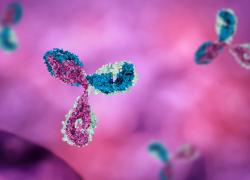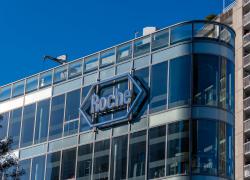
ASCO 2025 – J&J takes another prostate cancer shot
The company highlights the safety of its KLK2-targeting T-cell engager pasritamig.
The company highlights the safety of its KLK2-targeting T-cell engager pasritamig.

At last year’s ASCO Johnson & Johnson saw troubling toxicity with a KLK2-targeting radiopharmaceutical project; this year the group moved to showcase a different asset that it believes to be much safer, the anti-KLK2 T-cell engager pasritamig.
J&J oncology’s vice-president of global medical affairs, Mark Wildgust, highlighted an “exciting” safety profile with pasritamig that, he believes, could see it being given in the community setting if approved. In particular, he noted an 9% rate of cytokine release syndrome at the go-forward dose – all at grade 1 – and a lack of dose reductions and drug-related discontinuations.
Speaking to ApexOnco during ASCO, he contended that efficacy was also “really good”. A phase 1 trial of pasritamig in heavily pretreated castrate-resistant prostate cancer, presented at the conference on Sunday, found that 42% of 33 patients receiving the go-forward dosing regimen achieved PSA50; in this cohort, median radiographic progression-free survival was 7.9 months.
This puts pasritamig, previously known as JNJ-78278343, in a similar ballpark to other early-stage CRPC players. Janux has set itself up as the company to beat here, reporting a PSA50 rate of 100% with its PSMA-targeting masked T-cell engager JANX007 in the phase 1 Engager-PSMA01 trial.
However, this was in a heavily curated patient population, comprising pre-Pluvicto subjects receiving target doses of 2-9mg. And Janux was recently hit by disclosure of a CRS mitigation strategy, suggesting this side effect could be troublesome.
Another contender comes from J&J itself: the anti-PSMA ADC ARX517, gained via the $2bn purchase of Ambrx. That project has shown PSA50 rates of 52% in the phase 1 Apex-01 trial, but again this was only in certain dose cohorts.
Cross-trial comparison of selected agents in relapsed mCRPC
JANX007 | Xaluritamig (AMG509) | ARX517 | Pasritamig | |
|---|---|---|---|---|
| Company | Janux | Amgen | J&J (via Ambrx) | J&J |
| Description | Anti-PSMA T-cell engager | Anti-Steap1 T-cell engager | Anti-PSMA ADC | Anti-KLK2 T-cell engager |
| Trial | Engager-PSMA-01 | Ph1 | Apex-01 | Ph1 |
| Setting | 5th line | 4th line | 5th line | 5th line |
| PSA50 | 100% (16/16)* | 50% (47/95) | 52% (12/23)** | 42% (14/33)^^ |
| ORR | 13% (1/8) | 20% (14/69) | 22% (2/9)^ | 8% (7/84)^^^ |
| Median rPFS | 7.5 months | 7.8 months | N/A | 7.9 months |
| ≥Gr3 TRAEs | N/A | 75% | 9% | 4%^^ |
Note: *pre-Pluvicto pts receiving target doses of 2-9mg; **cohorts 6-8 only; ^cohorts 4-8 only; ^^RP2D only; ^^^across whole trial. Source: ASCO 2025, OncologyPipeline & company presentations.
Overall response rates didn't look as impressive with pasritamig, at 8% – but this was only given across the entire trial, not just the go-forward dosing regimen, comprising 3.5mg on day 1, 18mg on day 8, 300mg on day 15, then once every six weeks.
Wildgust said that in any case it was “too early” to compare the various early-stage prostate cancer agents, noting that rPFS data with pasritamig were immature.
He added that there was “absolutely” room for both ARX517 and pasritamig at J&J. The group is continuing dose optimisation for the Ambrx-originated project, but Wildgust noted that the purchase also brought in technology, including a “phenomenal” linker, that could be used to build a series of ADCs.
He reckons there’s also room at the company for several agents hitting KLK2, including the aforementioned radiopharmaceutical, JNJ-69086420, and a KLK2-targeting Car-T, JNJ-75229414. He called KLK2 “one of the best prostate cancer targets” around; however, J&J is the only group with clinical-stage assets against this target, according to OncologyPipeline.
J&J plans to move swiftly with pasritamig, with a phase 3 trial in the works for next year, although Wildgust declined to give details of its potential design. The company is already testing a combo with its anti-PSMA x CD28 JNJ-87189401 in phase 1; that asset uses a co-stimulatory approach that has proven controversial elsewhere.
3713













